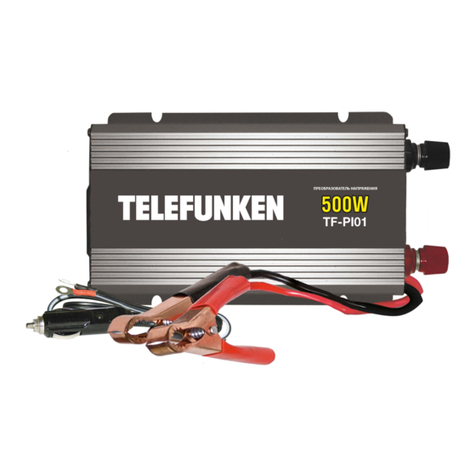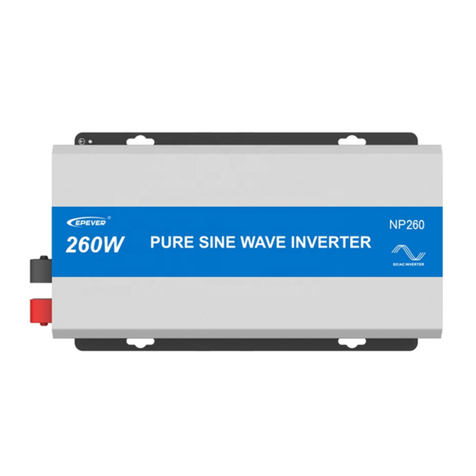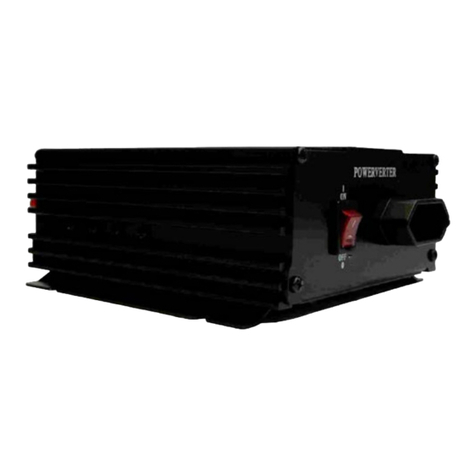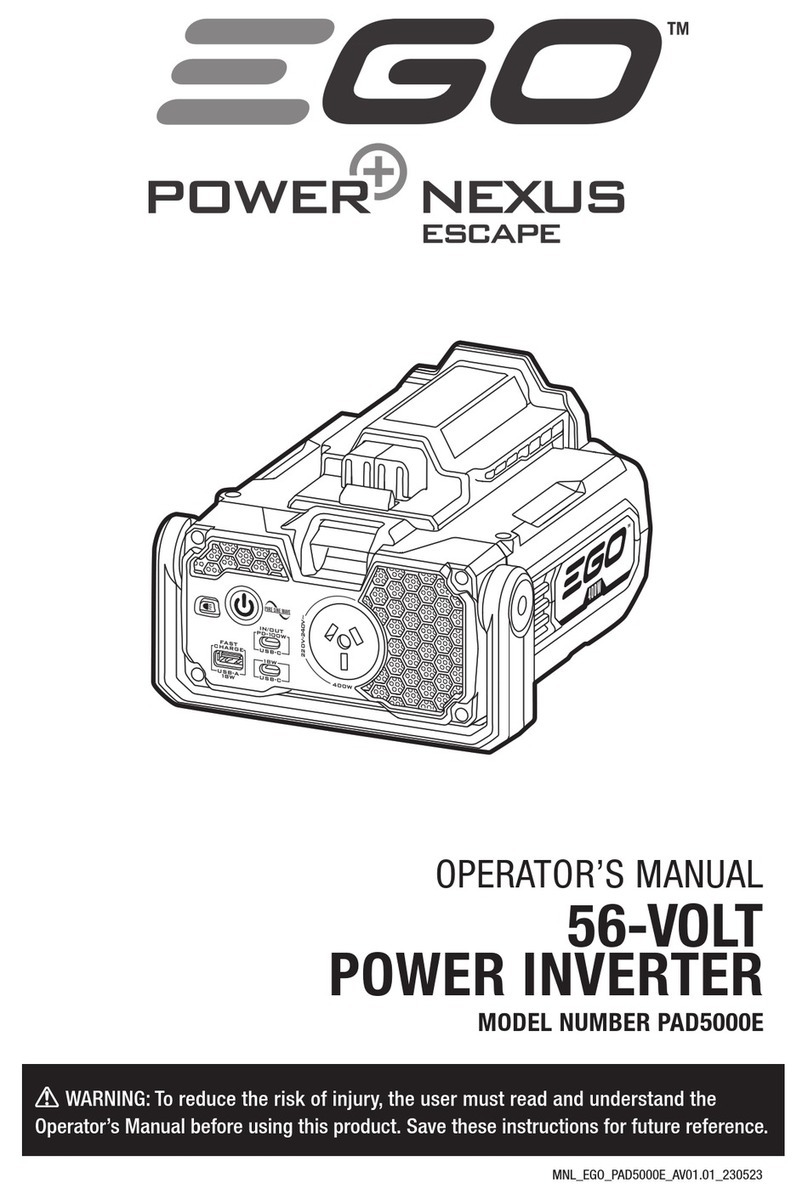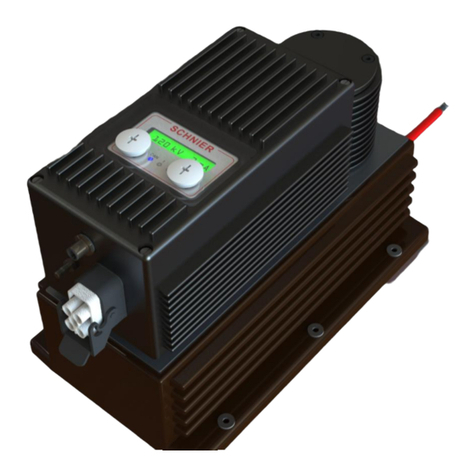Jegs 86002 User manual

User Guide for 86002
Inverter Generator
2300 Watt, Rated 1800 Watt

Table of Contents
1
Parts List...............................................................2
Introduction..........................................................3
Product Specifications......................................3
Customer Service .............................................3
Safety Rules.......................................................3-6
Safety Symbols................................................3
Safety Instructions............................................4-6
Control Panel Functions.....................................7-9
ON/OFF Start Switch and Choke......................7
Indicator Lights.................................................7-8
DC Protector....................................................8
Engine “Economy” Control...............................8
Parallel Outlets.................................................8
Fuel Cap Air Vent..............................................9
Ground Terminal...............................................9
Assembly.......................................................10-11
Connecting Generator to a..............................10
Building electrical system
Adding Fuel.....................................................10
Adding / Checking Oil.....................................11
Operation....................................................12-17
Grounding the Generator................................12
How to Start Engine.......................................12
How to Stop Engine.......................................13
Attaching Electronic Devices...........................14
Charging a 12 Volt Battery..............................14
AC Parallel Operation......................................15
Do Not Overload Generator................................16
Wattage Reference Guide...............................17
Maintenance.......................................................18
Maintenance Schedule....................................18
Checking Spark Plug......................................19
Changing Oil.................................................19-20
How to Clean Air Filter.....................................20
Checking Muffler and Spark Arrestor..............21
How to Clean Fuel Filter..................................22
Transport & Storage........................................22-23
Troubleshooting..................................................24
Specifications.....................................................25
Noise..................................................................25

2
Parts List
2
2
2
1Spark Plug Cover
2Spark Arrestor
Muffler Cover
Outer Casing (Side Panel)
Handle
Air Vent
Overload Indicator Light
Fuel Cap
AC Pilot Light
Recoil Starter
3-in-1 Start Switch
Control Panel
Economy Switch
Oil Warning Light Indicator
USB Outlet 5VDC 1.5A
120V AC 15A Duplex Outlet
Parallel Outlets
Ground Terminal
Circuit Breaker AC
12V DC Port
12V DC 8A Circuit Breaker
6
7
8
9
15
16
17
18
19
20
21
10
3
4
5
11
12
13
14
5
6
7
8
9
10 11 12
1
2
3
4
13
14
16
19
17
18
15
21
20

3
Introduction
Safety Symbols
Thank you for purchasing this 2300 watt portable
inverter generator from JEGS. This generator is
designed to give you years of reliable service when
operated and maintained as instructed in this manual.
Product Specifications:
This generator is an engine-driven, revolving field,
alternating current (AC) portable generator. It is
designed to supply electrical power to operate tools,
appliances, camping equipment, lighting, or serve
as a backup power source during power outages.
Indicates a hazardous situation which
could result in serious injury or death if
not avoided.
The emissions control system for this generator is
compliant with all standards set by the US EPA.
ModelSource 555-86002
Rated AC Voltage
Rated Frequency
AC Current
Rated Output
Maximum Output
USB Outlet
Cigarette Outlet
Displacement
Engine Type
Engine Oil Type
Engine Oil Capacity
Fuel Tank Type
AC Output
DC Output
Engine
120V
60Hz
15A
1800W
2300W
5V DC 1.5A
12V DC 8A
80cc
Single Cylinder,
4-Stroke, OHV
Air Cooled
SAE 10w30
11.8 oz / 350ml
1.18 gal / 4.5L
How to Contact Customer Service:
If you have questions regarding your purchase please
contact customer service at: 1.800.345.4545.
Save your original sales receipt and record the
following information below for service or warranty
assistance.
Toxic Fumes
Risk of
Electric Shock
Risk of Fire
Hot Surface
Risk of Explosion
Lifting Hazard
Date of Purchase:
Model Number:
Serial Number:

Safety Rules
The manufacturer cannot anticipate every possible
circumstance that the user may encounter hazards.
Therefore, the warnings in this manual, on tags,
and on affixed decals are not all-inclusive. To avoid
accidents, the user must understand and follow all
manual instructions and use good common sense.
WARNING!
Read and understand
this manual in its entirety
before operating this
generator. Improper use of this generator
could result in serious injury or death.
•
Using a generator indoors CAN KILL YOU
IN MINUTES!
• Carbon monoxide gas is a poisonous, odorless
gas that can cause headache, confusion, fatigue,
nausea, fainting, sickness, seizures, or death. If
you start to experience any of these symptoms,
IMMEDIATELY get fresh air and seek medical
attention.
•
Never use indoors, in a covered area, or in a
confined space, even if the doors and windows
are open.
•
Install a battery-operated carbon monoxide alarm
near bedrooms.
•
Keep exhaust this unit produces from entering a
confined area through windows, doors, vents,
or other openings.
•
When working in areas where vapors could
be inhaled, use a respirator rated for carbon
monoxide protection.
The engine exhaust contains chemicals
that can cause cancer and birth defects.
To reduce the risk of serious injury, do
not attempt to lift the generator alone.
Never exceed the generator’s wattage/
amperage capacity. This may damage the
generator and/or connected devices.
Never start or stop the engine with
electrical devices plugged into the
receptacles. Failure to do so could damage the
generator and/or connected devices.
Starter recoil and other moving parts can
catch on clothing, jewelry, and hair.
• Always wash hands after handling generator.
•
Check operating voltage and frequency of all
electrical devices prior to plugging into generator.
•
Always start the engine and let it stabilize before
connecting any electrical devices.
•
Disconnect all electrical devices before stopping
the engine.
• Do not wear loose clothing or loose gloves.
•
Remove jewelry or anything else that could be
caught in moving parts.
• Tie back hair, or wear protective head covering
to contain long hair.
Do not operate indoors or in a confined
space that prevents dangerous carbon
monoxide gas from dissipating.
The generator must be properly grounded
to prevent electrocution.
• Only operate the generator on a level surface.
• If connected to a structure, connect the ground
terminal to an appropriate ground.
4

Safety Rules Cont.
Keep away from flammable objects
and other hazardous materials.
• The fuel and its vapors used to power this unit
are highly flammable and could explode resulting
in serious injury or death.
• Never fill or drain fuel tank indoors.
•
Never overfill fuel tank. If fuel spills, move the
unit at least 30 feet away from the spill and wipe
up any remaining fuel on the unit before starting
the engine.
• Never smoke while operating or fueling this unit.
•
Never operate or store this unit near an open
flame, heat, or any other ignition source.
• Generator should be far away from buildings or
other equipment during operation.
• Keep engine free of grass, leaves, grease, and
other flammable debris.
•
When adding or draining fuel, unit should be
turned off for at least 2 minutes to cool before
removing fuel cap. If unit has been running, the
fuel cap may be under pressure, remove slowly.
•
To keep fuel from spilling, secure unit so it cannot
tip while operating or transporting.
•
When transporting unit, disconnect the spark plug
wire and make sure the fuel tank is empty with
the fuel shutoff valve turned to the off position.
Pull cord recoils rapidly and can pull arm
towards engine faster than you can let go
which could result in injury.
•
To avoid recoil, pull starter cord slowly until
resistance is felt, then pull rapidly.
Avoid touching hot areas of this unit.
• Only operate the generator on a level surface.
• If connected to a structure, connect the ground
terminal to an appropriate ground.
This generator produces high voltage
which may result in burns/electrocution
causing serious injury or death.
•
Never handle the generator, electrical devices, or
any cord while standing in water, while barefoot,
or when hands or feet are wet.
•
Always keep the generator dry. Never operate
generator in rain or under wet conditions.
• Use a ground fault circuit interrupter (GFCI) in a
damp or highly conductive area, such as metal
decking or steel work.
•
Never plug electrical devices into generator hav-
ing frayed, worn, or bare wires. Never touch bare
wires or contact receptacles.
•
Never permit a child or unqualified person to
operate generator. Always keep children a
minimum of 10 feet away from the generator.
• If using the generator for backup power, notify
the utility company.
•
If connecting generator to a building’s
electrical system for standby power, you must use
a qualified electrician to install a transfer switch.
Failure to isolate the generator from the power
utility could result in serious injury or death to
electric utility workers.
Never modify this unit in any way or
modify governed engine speed.
•
Increasing the governed engine speed is
dangerous and can result in personal injury and/
or damaged equipment.
•
Decreasing the governed engine speed adds an
excessive load and can damage the equipment.
•
This generator will supply the correct rated
frequency and voltage only when operating at
the preset governed speed.
5

Only use as intended. Used incorrectly,
serious injury or death could result.
• Do not bypass any safety device. Moving parts
are covered with guards. Make sure all protective
covers are in place.
•
Never transport or make adjustments to this unit
while it is running.
• Never insert objects into cooling slots.
Never operate this unit if there are any
broken or missing parts.
•
Improper treatment of this generator can shorten
it’s life.
•
Always repair this unit as specified in this manual.
•
Shut generator off if electrical output is missing,
unit vibrates excessively or begins to smoke,
spark, or emit flames.
Safety Rules Cont.
6

7
Control Panel Functions
ON/OFF Start Switch and Choke
Start Switch “OFF”
When the Start Switch is in the “OFF” position the
fuel valve is switched off and the engine will not run.
Start Switch “CHOKE”
When the Start Switch is in the “CHOKE” position
the fuel valve is switched on and the engine can be
started.
Start Switch “RUN”
When the Start Switch is in the “RUN” position the
fuel valve is switched on and the engine can run.
Note: The Choke is not required to start a warm
engine
USB Outlet
The Generator offers convenient (5V DC 1.5A) USB
outlet to allow charging of USB devices like Tablets,
MP3 players, GPS, Digital Cameras and other USB
chargeable devices.
Oil Warning Indicator Light
When the oil falls below the minimum level, the oil
warning indicator light comes on and the engine
stops automatically. The engine will not start until
the proper amount of oil is in the crank case.
Note: If the oil warning indicator light does not come
on and the engine stalls, turn the Start Switch to
“RUN” and pull the recoil starter.

8
Engine Overload Indicator Light
If the engine overload indicator light comes on, the
generator’s wattage / amperage capacity has been
exceeded by connected electrical devices or by a
power surge. When this occurs, the green AC Pilot
Indicator Light will go off. The engine will continue
to run, (but the red Engine Overload Indicator Light
will stay on and power will no longer be supplied to
connected electronic devices.)
Resolving the Issue
1. Disconnect any electronic devices then shut off
the engine.
2.
Reduce the total wattage of the connected
electronic devices until it is within the generator’s
rated output.
3.
Inspect the Air Inlet and Control Panel for any
blockage. Remove blockage if found.
4. Restart Engine.
Note: The engine overload indicator light may turn
on for a few seconds when attaching a load due to
a power surge. This is normal.
AC Pilot Indicator Light
The green AC Pilot Indicator Light comes on when
the engine starts and generates power.
DC Circuit Breaker
When the DC Circuit Breaker is in the “ON” position,
the generator is able to supply power to connected
electronic devices. When the DC Circuit Breaker is
Control Panel Functions Cont.
in the “OFF” position, the generator will no longer
supply power. The DC Circuit Breaker automatically
turns “OFF” when connecting electronic devices
to the generator that exceed the generator’s rated
output. If the DC Circuit Breaker turns off, reduce the
load of connected electronic devices until the load
is within the specified rated output. To re-establish
power, return the DC Circuit Breaker back to the
“ON” position.
If the DC circuit breaker turns off again,
stop using the generator immediately and
consult a qualified electrician or small
engine repair shop.
Engine Economy Control
• When the Engine Economy switch is turned to
the “ON” position, the economy control unit
automatically determines the generator’s proper
engine speed based on the connected electronic
load. This results in superior fuel economy and
reduces noise.
•
When the Economy switch is turned to the “OFF”
position, the engine runs at the rated speed
of 4,100 rpm.
Note: The Economy switch must be in the “OFF”
position when using electronic devices that require
a large starting current. Once these devices have
been started the Economy swich can be turned to
the “ON” position.

of the generator is not required by the NEC to be
connected to an earthen ground electrode. The
generator neutral conductor is bonded to the
generator frame in accordance with NEC
Article 250.34(C)
Parallel Outlets
Located just above the Ground Terminal, the Parallel
Outputs enables two generators to run together.
Special cables are required. The rated output is
3.42kVA and the rated current is 30A/120VAC.
Control Panel Functions Cont.
Fuel Cap
Turn cap counterclockwise to remove.
Fuel Cap Air Vent
The fuel cap is equipped with an air vent to stop fuel
from flowing to the carburetor. The Air Vent must
be in the “ON” position to allow fuel to flow so that
the engine can run. Turn the Air Vent to the “OFF”
position to stop fuel flow.
Ground Terminal
This portable inverter generator is equipped with a
terminal for the connection of a ground electrode
conductor where a grounding electrode system is
required by NEC Article 250.34(A). The equipment
grounding conductors of the generator receptacles
are bonded to the generator frame. Where the
generator supplies power to cord and plug
connected equipment, like power tools, the frame
Never connect two generators that are
different models.
Generator must be properly grounded to
prevent electrocution.
• Only connect to another 86002 Generator.
• Only use a parallel operation cable kit designed
to work with this generator.
• Only operate generator on a level surface.
• Always connect the nut and ground terminal on
the frame to an appropriate ground source.
9

10
Assembly
Connecting the Generator
to an Electrical System
If you are connecting the generator to a building’s
electrical system for standby power, you must use
a qualified electrician to install a transfer switch. The
power from the generator must be isolated from
the circuit breaker or alternative power source. The
connection must comply with all electrical codes
and applicable laws.
This generator produces a very high
voltage which could result in burn,
electrocution, serious injury, or death.
•
Never handle the generator, electronic devices, or
any cord while standing in water, while barefoot,
or when hands or feet are wet.
•
Always keep the generator dry. Never operate
generator in rain or under wet conditions.
• Use a ground fault circuit interrupter (GFCI) in a
damp or highly conductive area, such as metal
decking or steel work.
•
Never plug electronic devices into generator
having frayed, worn, or bare wires. Never touch
bare wires or make contact with receptacles.
•
Never permit a child or unqualified person to
operate the generator. Keep children a minimum
of 10 feet away from the generator at all times.
• If using the generator for back up power, notify
the utility company.
•
Install a transfer switch. Failure to isolate the
generator from the power utility could result in
serious injury or death to electric utility workers.
Never directly connect
the generator to a house-
hold power source.
Adding Fuel
•
Set generator outdoors in a well-ventilated area,
away from structures and people.
• Slowly remove fuel cap.
•
Insert a funnel into the fuel tank and carefully
pour gasoline into the tank until fuel level reaches
1 ½ inches below the top of the neck. Be
careful not to overfill the tank, to allow space for
fuel expansion.

Assembly Cont.
Adding and Checking Engine Oil
• Place generator on a level surface.
•
Remove screws and then remove the outer
casing cover.
• Remove the crankcase dipstick.
• Insert a funnel into the crankcase dipstick hole
and carefully add the specified amount of 4-Cycle
engine oil (SAE 10W-30) to empty reservoir until
or oil reaches the outer edge of the oil fill hole
(crankcase dipstick hole).
• Be sure to replace dipstick and securely tighten
before attempting to start the engine.
•
To check oil, set generator on a level surface,
wipe dipstick clean, then reinsert dipstick without
re-threading.
Specifications
• Recommended Oil: SAE 10W-30
• Oil Capacity: 11.8 oz. (0.35 L)
This generator has been shipped
without engine oil. You must add oil before
operating this unit. Always check the oil level
before each use.
11

12
Operation
Grounding the Generator
To avoid electrocution, this generator must be
properly grounded prior to use. For instructions see
Control Panel Functions on page 9.
Standard Atmospheric Conditions
• Ambient Temperature: 77º F (25º C)
• Barometric Pressure: 100 kPa
• Relative Humidity: 30%
The generator output will vary due to changes in
temperature, altitude, and humidity. If the humidity,
temperature, or altitude are higher than standard
atmospheric conditions, the generator’s output will
be reduced. The load attached to the generator must
therefore be reduced.
How to Start the Engine
• Place generator on a level surface. All electrical
loads MUST be disconnected from generator.
• Turn the Economy switch to “OFF”
• Turn the fuel cap Air Vent to the “ON” position.
• Turn the 3-in-1 Start Switch to “CHOKE”
•
Pull recoil handle (starter cord) slowly until
resistance is felt, then pull rapidly.
•
Let engine run for several seconds and then
gradually, as engine warms up, turn the 3-in-1
Start Switch to the “RUN” position.
Pull cord recoils quickly and could result
in injury
• To avoid recoil, pull the starter cord slowly until
resistance is felt, then pull rapidly.

13
Note: Steps to start the generator with the Economy
switch in the “ON” position
• Disconnect all electrical loads from generator.
• Start the engine.
•
If ambient temperature is below 32ºF (0ºC) allow
about 3 minutes for the engine to warm up.
•
The Economy is in “ON” position, the unit returns
to normal operation after the above warm up time.
•
Economy switch must be turned to the “OFF”
position when using electronic devices that
require a large starting current.
How to Stop the Engine
• Turn the Economy switch to the “OFF” position.
•
Disconnect any electronic device. All loads MUST
be disconnected from the generator. Never start
or stop the engine with electrical devices plugged
in to the receptacles.
•
Turn the 3-in-1 Start Switch to the “OFF” position.
• Turn the fuel cap Air Vent to the “OFF” position.
Operation Cont.
Never start or stop engine with electrical
devices plugged in to the receptacles.
Failure to do so could damage the generator
and / or connected electrical devices.
•
Always start the engine and let it stabilize before
connecting any electronic devices.
•
Disconnect all electronic devices before stopping
the engine.

14
Operation Cont.
How to Attach Electronic Devices
1. Before Starting generator
•
Make sure the generator is grounded (see
page 9 for instructions).
•
Make sure the attached load is within the
generator rated output and the receptacle’s
rated current.
•
Make sure all electrical cords and receptacles
are in good condition.
• Make sure all of your electronic devices are
turned “OFF” before plugging them into
the generator.
2. Start the engine.
3. If the attached load is small, turn the Economy
switch to the “ON” position. For a larger load, or
if attaching multiple electronic devices turn the
Economy switch to the “OFF” position.
4.
Make sure the green AC pilot indicator light is on.
5.
When the engine has stabilized, plug in and turn
on first load. It is strongly recommended to plug
in devices with the largest output first and the
smallest output last to help prevent overloading
the generator.
6. Allow generator output to stabilize (engine and
attached devices run evenly) before plugging in
the next load.
7.
Once stabilized the Economy switch can be
turned back on.
Charging a 12 Volt Battery
This generator can be used to charge 12 volt
automotive or storage batteries by taking the
following steps.
1.
Inspect fluid level of the battery cells. Add ONLY
distilled water to any cell where fluid level is low.
Never add tap water.
2.
Clean battery terminals with a brush if corroded.
3.
Securely connect the red cable clamp to the
positive (+) battery terminal.
4. Securely connect the black cable clamp to the
negative (-) battery terminal.
5. Turn the Economy switch to the “OFF” position
to start battery charging.
6.
The battery is considered fully charged when the
gravity of its fluid is between 1.26 and 1.28 when
measured by a hydrometer.
Note: It is strongly recommended to check the
gravity level of the electrode at least once per hour
with a hydrometer to prevent overcharging and to
test the battery’s condition. Be careful to follow the
hydrometer manufacturer’s instructions.
Battery electrolyte is poisonous
and dangerous
•
Do not disconnect the battery clamps while
charging. Batteries produce explosive gases.
Disconnecting the battery clamps while charging
could cause a spark and ignite.
• Do not charge a battery in an enclosed area.
Continued on next page.

•
Never smoke while charging the battery, or
operating, or fueling this generator.
• Battery electrolyte contains sulfuric acid. Avoid
contact with skin, eyes, and clothing. Always wear
eye protection when charging battery.
•
If battery acid contacts skin, flush with water
immediately. If it contacts eye, flush with water
for 15 minutes and get immediate medical atten-
tion. Fort internal ingestion, drink large quantities
of milk or water, followed by milk of magnesia,
beaten egg, or vegetable oil. Contact a medical
physician immediately.
AC Parallel Operation
It is possible to connect two 86002 generators to
each other, using a parallel cable kit, to increase
available power output.
•
Connect Parallel Operation Cables to two 86002
generators according to the instructions provided
with the cable kit.
• Make sure the Economy switch is in the same
position on both generators.
•
All electronic devices should be turned “OFF” and
disconnected from generators prior to starting
generator engines.
•
Start generator engines. Make sure the green out-
put indicator light comes on for each generator.
•
When engines have stabilized, plug in electronic
device to AC receptacle and turn on first load.
• Allow generator output to stabilize (engine and
attached devices run evenly) before plugging in
the next load.
Operation Cont.
Specifications
• Max Power in Parallel: 4.6kVA
• Rated Power in Parallel: 3.42kVA
Limit operation to 3 seconds for loads that require
maximum output. For continuous operation,
do not exceed the rated output.
Note: Connect the largest output first, followed
by smallest to prevent overloading the generator.
Most electronic devices require power
beyond its rated wattage to start. This additional
power is referred to as surge watts and usually lasts
between 2-3 seconds. When an electronic device
is started, the red overload indicator may come
on. This is normal. If the light stays on disconnect
all electronic devices and stop the engine. Refer to
“Engine Overload Indicator Light” on page 8.
15

Only connect electronic devices to the
generator that are in good working order
and do not exceed the rated power supply of the
parallel generators or the desired receptacle.
• A faulty appliance or power cord can create an
electric shock. Do not use electronic devices that
have a damaged cord or plug.
•
If an appliance begins to operate abnormally,
becomes sluggish, or stalls, turn off and
disconnect appliance immediately. The
appliance may have a fault or its rated load capacity
exceeds the power supply of the generator.
•
To avoid damage to generator or electronic
device, do not connect a load to the generator if
its electrical rating exceeds that of the receptacle.
Never connect generators that are
different models.
• Only connect to another 86002 Generator.
•
Only use a JEGS approved parallel operation
cable kit to connect generators.
• Never exceed maximum power , this setup may
be used for no more than 30 minutes.
• The parallel cable must be removed if operating
only one generator.
•
Never disconnect or remove the parallel operation
cable while the generator is still running.
Operation Cont.
Don’t Overload the Generator
Make sure that your generator can supply enough
rated watts and surge watts for all electrical loads
connected to the generator. Surge watts refer to the
power a generator must supply to start an electrical
device. This power surge for starting a device usually
lasts between 2-3 seconds but this additional output
must be considered when selecting the electrical
devices you plan to attach to the generator.
Operating voltage and frequency requirement of all
electrical equipment should be verified prior to plug-
ging them into this generator. Damage may result if
the equipment is not designed to operate within a
+/- 10% voltage variation, and +/- 3 Hz frequency
deviation from the generator name plate ratings.
Never exceed generator’s wattage/
amperage capacity. This could damage
the generator and connected electrical devices.
•
Verify the operating voltage and frequency
requirements of all electrical devices prior to
plugging in to the generator.
16

Operation Cont.
Wattage Reference Guide
(Wattages listed are approximate. Check electrical
devices for actual wattage.)
Essentials
75 W Light Bulbs
18 Cu. Ft. Refrigerator
Furnace Fan (1/2hp)
Sump Pump (1/2hp)
Water Pump (1/2hp)
Heating/Cooling
Dehumidifier
Table Fan
Window AC (10k BTU)
Central Air (4 ton)
Electric Blanket
Space Heater
Kitchen
Blender
Toaster (2 slices)
Coffee Maker
Electric Range (1 element)
Dishwasher
Electric Oven
Electric Water Heater
Laundry Room
Iron
Washing Machine
Gas Clothes Dryer
Electric Clothes Dryer
Bathroom
Hair Dryer
Curling Iron
Rated Watts
75 ea.
800
800
1000
1000
650
200
1200
1500
400
1800
300
1000
1500
1500
1500
3500
4000
1200
1150
700
5400
1250
1000
Surge Watts
75 ea.
2200
2350
2000
3000
800
300
3600
6000
400
1800
900
1000
1500
1500
2000
3500
4000
1200
2400
1500
6750
1250
1000
Family Room
X-Box or PlayStation
AM/FM Radio
DVD
TV or Monitor (40 in.)
Home Office
Fax Machine
Computer
Printer
Copy Machine
Power Tools
1000W Work Light
Airless Sprayer (1/3hp)
Reciprocating Saw
Circular Saw (7 1/2in.)
Miter Saw (10 in.)
Table/Radial Arm Saw
Electric Drill (5.4 Amps)
Hammer Drill
Air Compressor
Other
Home Security
Garage Door Opener
Rated Watts
40
10
100
200
65
800
250
700
1000
600
750
1400
800
1000
600
700
1600
500
750
Surge Watts
40
10
100
200
65
800
950
800
1000
800
950
2300
1200
2000
900
1000
4500
500
750
17

18
Regular maintenance will extend the life of this
generator and improve its performance. The warranty
does not cover items that result from operator abuse,
misuse, or negligence. To receive full value from the
warranty, operator must maintain the generator as
instructed in this manual, including proper storage.
Maintenance
Maintenance Schedule
Pre-Operation Steps
Before starting the engine, perform the following
pre-operation steps:
•
Check the level of the engine oil and the fuel tank
level. Check for any leakage.
• Check fuel hose for cracks or damage. Replace
if necessary.
• Make sure the air filter is clean.
•
Remove any debris that has collected on the
generator and around the muffler and controls.
Use a vacuum cleaner to pick up loose debris. If
dirt is caked on, use a soft bristle brush.
• Inspect work area for hazards.
After Each Use
Perform the following procedure after each use:
• Shut off engine.
• Store unit in a clean and dry area.
Before inspecting or servicing this
machine, make sure the engine is off and
no parts are moving. Disconnect the spark plug
wire and move it away from the spark plug.
Carburetor Adjustment
The carburetor is low emission and is equipped with
a non-adjustable idle mixture valve. If adjustment is
needed contact an authorized dealer.
Oil Recommendations
• Do not use special additives.
• Outdoor temperatures determine the proper oil
viscosity for the engine. Use the chart to select
the best viscosity for the outdoor temperature
range expected.
After 8 Hours
or Daily
After First 5 Hours
Annually
(25 hr. Usage)
Annually
(100 hr Usage)
Clean debris from generator
and air filter area
Change engine oil
Check engine oil level
Check and clean air filter
Change engine oil after the first
25 hours, again at 50 hours,
and then every 100 hours after.
Inspect condition of muffler and
spark arrestor
Service spark plug
(Replace with NGK BP7ES,
Champion N9YC, or equivalent)
Inspect fuel valve and fuel lines
for leaks or damage
Inspect condition of muffler and
spark arrestor
Check and clean the air filter
assembly. Replace air filter
Clean cooling system cylinder
head fins and flywheel fan

19
Maintenance Cont.
Note:
• Below 40º F (4º C) the use of SAE 30 will result
in hard starting.
•
Above 80º F (27º C) the use of 10W-30 may
cause increased oil consumption. Check oil level
more frequently
Checking the Spark Plug
• Remove the Engine Service Panel to gain
access to the spark plug.
• Remove the plug wire from the spark plug.
• Before removing the spark plug, clean the area
around its base to prevent debris from entering
the engine.
• Insert a 19mm, 6-point, deep-well spark plug
socket wrench through the opening on the
outside of the cover. Turn the wrench counter
-clockwise to loosen and remove spark plug.
• Check for discoloration and clean carbon
deposits from the electrode with a wire brush.
• Check the electrode gap and carefully adjust
to 0.024-0.028 in. (0.6 - 0.7mm) if necessary.
• Reinstall spark plug and tighten to 15 ft-lbs
(20.0Nm) of torque.
• If spark plug is worn, replace only with an
equivalent type. Spark plug should be replaced
annually regardless of apparent condition.
• Reconnect spark plug wire, firmly, until it clicks
into place.
Standard Spark Plug
• Torch F7TC/F7RTC
Spark Plug Gap
• 0.024-0.028 in. (0.6-0.7 mm)
Spark Plug Torque
• 15 ft-lbs (20.0 Nm)
Changing Oil
• Place generator on a level surface.
• Run the generator for several minutes until the
engine is warm. Turn off generator.
• Remove screws, then remove the outer casing
side cover.
• Remove the crankcase dipstick.
• Place an oil pan underneath the engine. Tilt
generator to collect used oil. Allow oil to drain
completely.
• Return generator to a level surface.
• Carefully add 4-Cycle engine oil (SAE 10W-30)
to empty reservoir until the oil reaches the outer
edge of the oil fill hole (Crankcase dipstick hole)
• Use a clean rag to wipe up any spilled oil.
• Replace crankcase dipstick.
• Reinstall the outer casing side cover and tighten
the screws.
Table of contents
Popular Inverter manuals by other brands
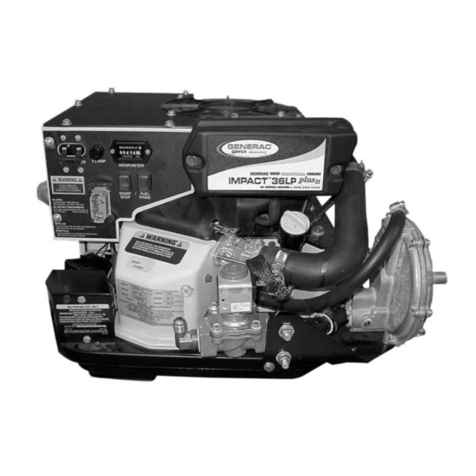
Generac Power Systems
Generac Power Systems 00941-3 Owners and installation manual
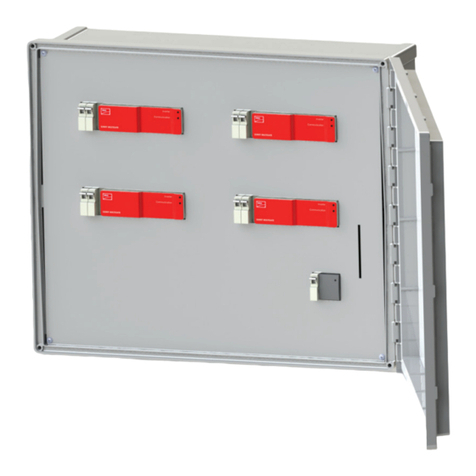
Teal
Teal SMA SUNNY MULTIGATE XT installation manual
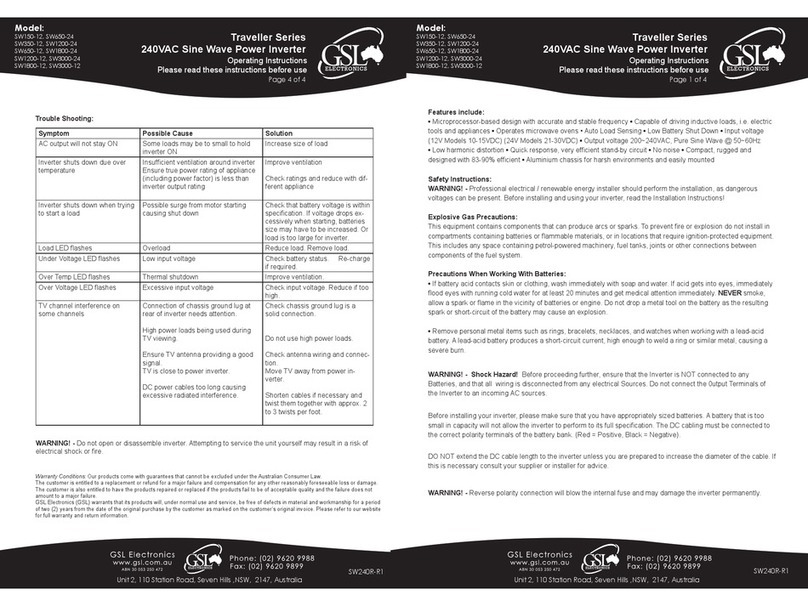
GSL
GSL SW150-12 operating instructions
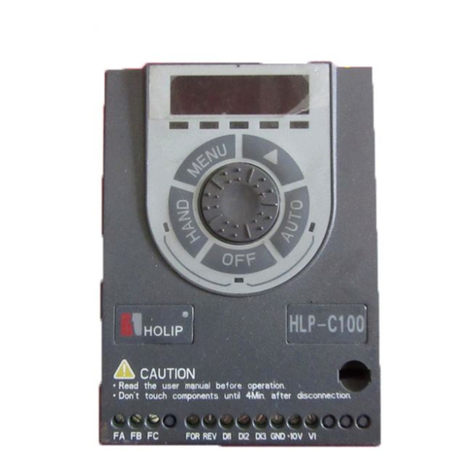
Holip
Holip HLP-C100 Series operating manual

Hoymiles
Hoymiles HMS-900-2T Quick installation guide
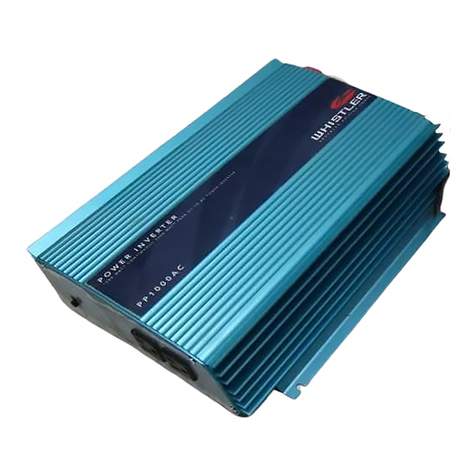
Whistler
Whistler 1000 owner's manual
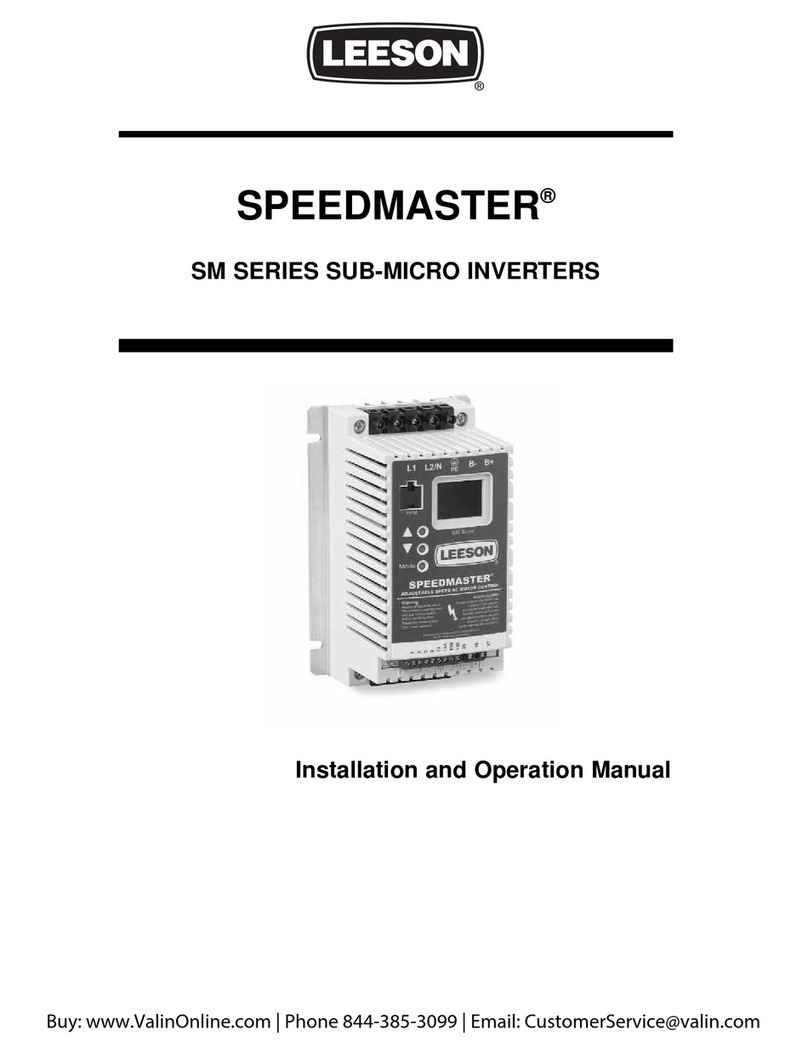
Leeson
Leeson SPEEDMASTER SM Series Installation and operation manual
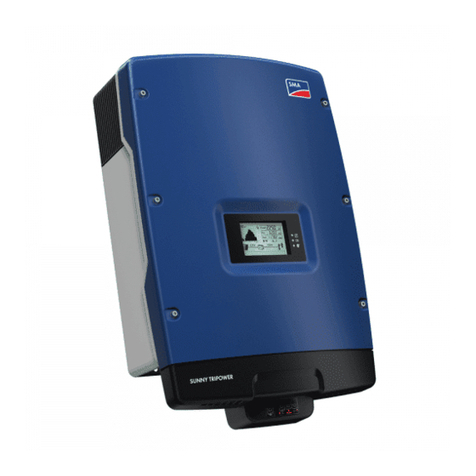
SMA
SMA SUNNY TRIPOWER 5000TL Service manual
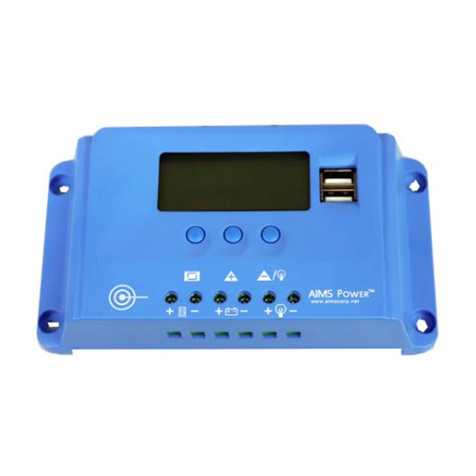
AIMS Power
AIMS Power SCC10APWM Installation and operation manual
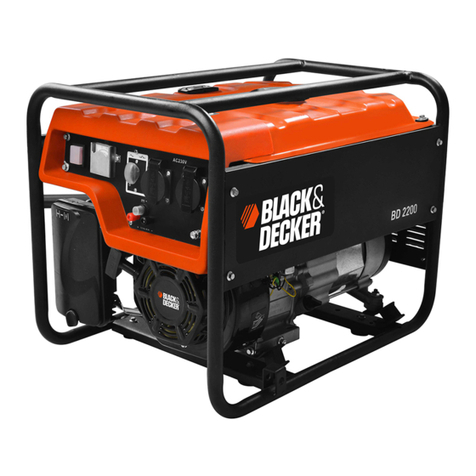
Black & Decker
Black & Decker BD2200 Original instructions
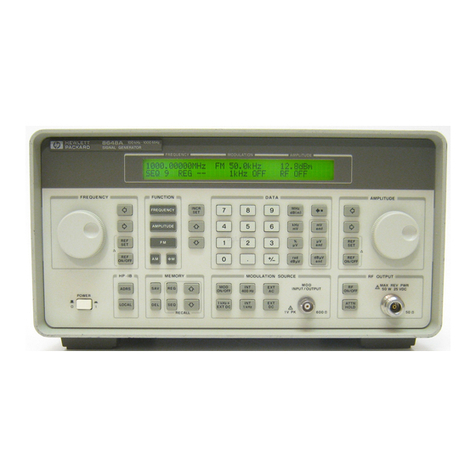
Agilent Technologies
Agilent Technologies 8648A Operating and service manual
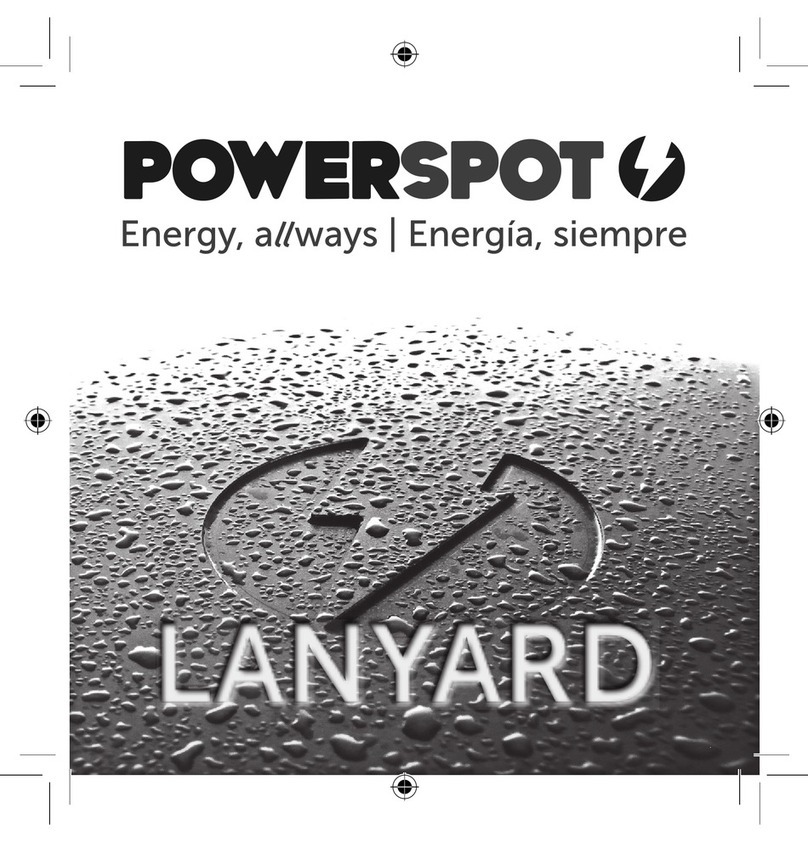
Powerspot
Powerspot Lanyard user manual
